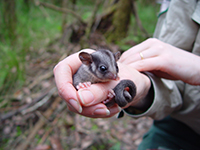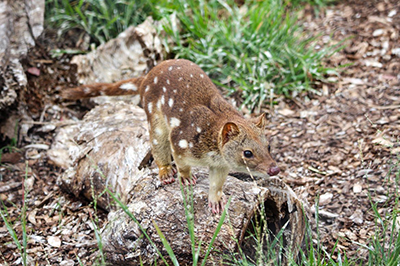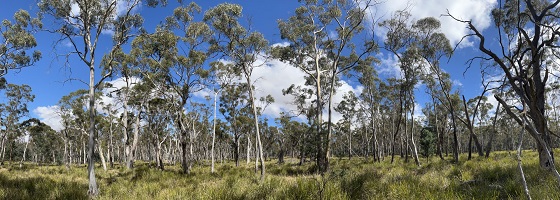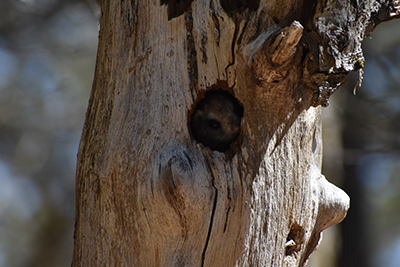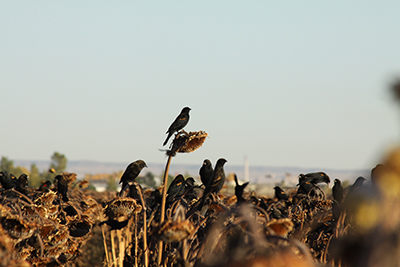Ten years of arboreal camera trapping for the cryptic and critically endangered Leadbeater’s possum has enabled surveys with higher reliability and at a greater spatial scale than previously possible, clarifying range limits and greatly increasing our knowledge of occupancy patterns in forests impacted by logging and bushfire. An important caveat is that detection/non-detection data from camera trapping may be insensitive at detecting population declines for communally denning species for whom abundance fluctuates more than occupancy. Photograph by Dan Harley.
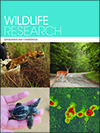
Wildlife Research
Volume 51 Number 2 2024
The spot-tailed quoll is difficult to detect owing to its rarity, remote habitat and large home ranges. In this study, environmental DNA (eDNA) soil analysis was evaluated as an alternative to traditional monitoring methods for spot-tailed quoll detection. We designed an eDNA assay that showed high sensitivity at quoll latrine sites but performed poorly in non-latrine habitat due to low concentrations of quoll DNA in soil samples. We thus conclude that eDNA analysis of soil is unlikely to improve current monitoring methods for this species. Photograph by Jemma Cripps (ARI).
Fallow deer in Tasmania exhibit remarkable dietary adaptability, a critical factor in their expanding range. This study compared their diets in established grassy woodlands and newer highland habitats, revealing a broad dietary niche. These findings underscore the urgency of robust management strategies to curb further range expansion and mitigate potential impacts on areas with high conservation values. Photograph by Thomas Guy.
WR23124 Abstract | WR23124 Full Text | WR23124PDF (792 KB) | WR23124Supplementary Material (714 KB) Open Access Article
In North America, climate change and habitat loss are leading to increased interspecific contact between northern and southern flying squirrels. Both species use tree cavities for denning, and we assessed the seasonal selection of these nest trees by the two flying squirrel species at a site where they both occur. We found that both species used larger trees in winter than in summer, and that southern flying squirrels used larger trees than did northern flying squirrels. Photo by Jacob Bowman.
Non-lethal repellents are needed to protect agricultural crops and valued resources from damages caused by some wild birds worldwide. We systematically searched scientific publications, patents and product registrations to develop a current review and synthesis regarding chemical bird repellents for wildlife researchers, ecologists, managers and conservationists. We then developed a comparative ‘index of success’ associated with each tested bird repellent for the future research and development of chemical bird repellents. Photograph by Dr Scott Werner (USDA National Wildlife Research Center).
WR23062 Abstract | WR23062 Full Text | WR23062PDF (1 MB) | WR23062Supplementary Material (1.4 MB) Open Access Article



